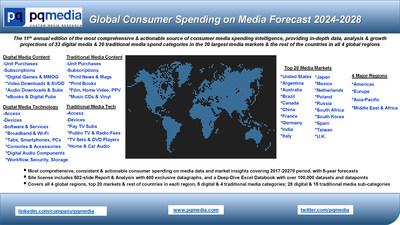Inflation is still gnawing at household budgets across advanced and emerging economies, curbing real consumer spending even as headline price growth has eased from its peak. The cumulative rise in prices, coupled with higher borrowing costs, is reshaping buying habits: shoppers are trading down to cheaper brands, delaying big-ticket purchases, and stretching payments with credit and “buy now, pay later” plans. Retailers report resilient nominal sales but softer volumes, while promotions and shrinkflation proliferate as firms compete for cautious wallets.
The squeeze is uneven. U.S. demand has held up better than most but shows signs of fatigue as excess savings dwindle and debt service costs rise. Europe remains fragile amid weak real incomes and elevated energy-related costs, and the U.K. faces a persistent cost-of-living strain. A weaker yen has kept imported prices sticky in Japan, and many emerging markets are grappling with volatile food and fuel bills that hit lower-income households hardest. China’s consumers remain wary amid property-market stresses.
With services inflation sticky and central banks hesitant to declare victory, the outlook hinges on whether real wage gains can outpace prices without reigniting inflation. This article examines how the cost pressures are filtering through to spending patterns, which sectors are most exposed, and what the squeeze means for global growth and policy paths in the months ahead.
Table of Contents
- as Essentials Outpace Pay
- Consumers Trade Down and Delay Big Purchases While Credit Stress Builds
- Action Plan Expand targeted relief fix food and energy bottlenecks index benefits to prices and bolster value ranges and loyalty incentives
- Future Outlook
as Essentials Outpace Pay
Household budgets are being redirected toward necessities as price growth in food, energy, and shelter continues to outpace wages across major economies, according to retailers and payment data, narrowing the space for discretionary purchases and prompting consumers to trade down, delay big-ticket buys, and consolidate shopping trips even as headline inflation eases unevenly and central banks hold rates higher for longer.
- Staples gain wallet share: Grocery and utility spend climbs, squeezing apparel, electronics, and leisure.
- Value-seeking behavior: Shift to private labels, bulk buys, and discount channels accelerates; promotions lift volumes but pressure margins.
- Regional divergence: Europe faces elevated energy and food costs; the U.S. contends with sticky services and shelter; emerging markets see import prices amplified by weaker currencies.
- Debt stress edges up: Higher borrowing costs lift servicing burdens; delinquency rates rise among lower-income cohorts.
- Corporate response: Brands resize packs, trim SKUs, and deploy loyalty pricing as input-cost relief only partially reaches shelves.
Consumers Trade Down and Delay Big Purchases While Credit Stress Builds
With price pressures lingering, households are increasingly trading down to cheaper alternatives and pushing out big-ticket buys, even as retailers lean on promotions to defend traffic. Baskets are shifting toward private-label, smaller pack sizes, and discount channels; intent to purchase cars, appliances, electronics, and home upgrades is being deferred. Retailers report a mix shift to essentials and lower-priced SKUs, with soft unit volumes masked by nominal price gains. At the same time, credit stress is building: elevated borrowing costs and tighter lending standards are nudging more shoppers into installment plans and BNPL, while early- and late-stage delinquencies edge higher-most visibly among lower-income and subprime cohorts-as lenders lift loss provisions.
- Downtrading signals: rising store-brand share, increased value-pack and discount-channel penetration.
- Durables cooldown: deferred purchases in autos, appliances, furniture; order backlogs thin as deal-seeking intensifies.
- Financing pressure: elevated card APRs, tighter approval rates, and greater reliance on installment options.
- Delinquency drift: 30-90 day past-due rates ticking up across cards and auto; repossessions normalizing above pre-pandemic levels.
- Retailer playbook: heavier promotions, more entry-price SKUs, and resistance to shrinkflation.
- Macro overhang: higher-for-longer rates and fading savings buffers constrain discretionary spend.
Action Plan Expand targeted relief fix food and energy bottlenecks index benefits to prices and bolster value ranges and loyalty incentives
With household budgets under acute pressure, policymakers and retailers are coalescing around a practical toolkit designed to cushion demand and contain headline spikes: authorities are weighing means‑tested relief that targets low‑income families without stoking broad inflation; regulators and industry aim to clear food and fuel chokepoints to stabilize shelf prices; treasuries are assessing automatic indexation of core benefits to inflation to protect real incomes; and grocers are expanding value tiers and loyalty mechanics to keep essential baskets affordable while preserving volume.
- Targeted relief: time‑limited utility credits, e‑vouchers for staples, and suspension of nuisance fees on basic goods to reach vulnerable households quickly.
- Supply fixes: expedited port clearances, temporary logistics waivers with safety guardrails, prioritized rail/road slots for perishables, strategic stock releases, and fast‑tracking energy connections to ease input costs.
- Indexed protections: COLA-style adjustments for social transfers and tax thresholds, with transparent caps, quarterly reviews, and sunset clauses to anchor expectations.
- Value and loyalty: wider entry‑price ranges, clear unit pricing, price‑lock baskets, and targeted loyalty rewards that steer discounts to essential items rather than discretionary spend.
Future Outlook
As prices outpace pay in many economies, households are trading down, postponing big-ticket purchases and shifting more of their spending to essentials. Retailers are responding with discounts and smaller pack sizes, even as higher costs squeeze margins and thin out inventories.
The next tests will come with fresh inflation and retail sales readings, wage settlements and central bank decisions that will signal how quickly borrowing costs might ease. Any relief will depend on whether core price pressures continue to cool without undercutting employment.
For now, value is trumping volume at checkout counters worldwide-a reminder that, until inflation meaningfully recedes, the squeeze on consumer budgets will continue to shape the global recovery.


